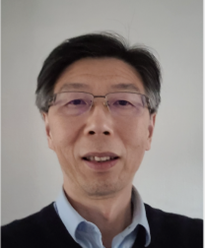Computational Fluid Dynamic of Floating Offshore Structures
A special issue of Journal of Marine Science and Engineering (ISSN 2077-1312). This special issue belongs to the section "Ocean Engineering".
Deadline for manuscript submissions: 20 July 2024 | Viewed by 857
Special Issue Editors
Interests: computational aerodynamics and hydrodynamics; numerical wave tanks; Cartesian cut cell and overset grid; wave structure interaction; offshore renewable energy
Special Issues, Collections and Topics in MDPI journals
Interests: structural design; coupled modeling and advanced control offshore wind turbines
Special Issues, Collections and Topics in MDPI journals
Interests: extreme waves; fluid–structure interactions; digital twins; cyber-physical systems
Special Issues, Collections and Topics in MDPI journals
Special Issue Information
Dear Colleagues,
This Special Issue aims to explore the applications of Computational Fluid Dynamics (CFD) in the analysis and design of floating offshore structures. Floating offshore structures are becoming increasingly important in the offshore industry due to their potential for cost-effective and environmentally friendly energy production. By accurately representing the fluid–structure interaction, CFD enables the optimization of system performance, which includes structural design, mooring systems, and dynamic positioning control strategies.
This Special Issue invites researchers and practitioners to contribute original research articles, review papers, and case studies that showcase the latest advancements in CFD applied to floating offshore structures. Topics of interest include, but are not limited to:
- Numerical methods and algorithms for simulating fluid–structure interactions in the context of floating offshore structures.
- Validation and verification of CFD models against experimental data or field measurements.
- Optimization of floating offshore structures for improved performance, safety, and reliability.
- Effects of environmental conditions (waves, currents, winds) on the behaviour and performance of floating offshore structures.
- CFD-based design guidelines and best practices for floating offshore structures.
- Multi-physics and multi-scale modelling of floating offshore structures.
- Uncertainty quantification and risk analysis in CFD simulations of floating offshore structures.
- Application of machine learning and artificial intelligence techniques in CFD modelling of floating offshore structures.
Prof. Dr. Ling Qian
Dr. Yang Yang
Dr. Harrif Santo
Guest Editors
Manuscript Submission Information
Manuscripts should be submitted online at www.mdpi.com by registering and logging in to this website. Once you are registered, click here to go to the submission form. Manuscripts can be submitted until the deadline. All submissions that pass pre-check are peer-reviewed. Accepted papers will be published continuously in the journal (as soon as accepted) and will be listed together on the special issue website. Research articles, review articles as well as short communications are invited. For planned papers, a title and short abstract (about 100 words) can be sent to the Editorial Office for announcement on this website.
Submitted manuscripts should not have been published previously, nor be under consideration for publication elsewhere (except conference proceedings papers). All manuscripts are thoroughly refereed through a single-blind peer-review process. A guide for authors and other relevant information for submission of manuscripts is available on the Instructions for Authors page. Journal of Marine Science and Engineering is an international peer-reviewed open access monthly journal published by MDPI.
Please visit the Instructions for Authors page before submitting a manuscript. The Article Processing Charge (APC) for publication in this open access journal is 2600 CHF (Swiss Francs). Submitted papers should be well formatted and use good English. Authors may use MDPI's English editing service prior to publication or during author revisions.
Keywords
- computational fluid dynamics
- floating offshore structures
- fluid–structure interaction
- optimization, environmental conditions
- design guidelines
- multi-physics modelling
- uncertainty quantification
- machine learning
- artificial intelligence







